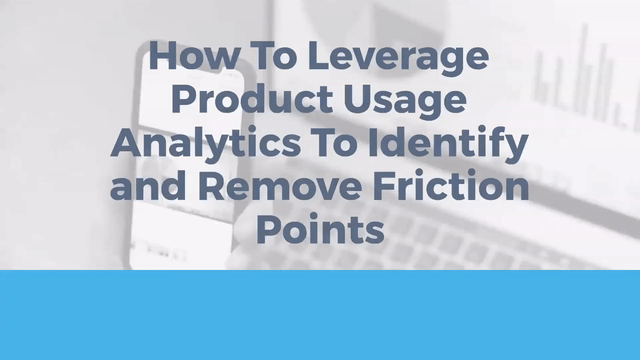Like it or not, your product is rigged with obstacles. As users travel through even the best-designed products, they’re sure to trip up, overlook key features, or get snagged with questions. It’s not the goal, but it is the reality. So, what do you want to do about it?
As a product leader or manager, it’s your job to spot and eliminate these customer friction points. And the better you are at slicing through those holdups, the faster you’ll see your product grow.
Wondering how to eliminate customer friction and boost feature adoption? In this article, we lay out ways you can leverage product usage analytics to identify holdups, remove customer friction points, and drive product growth.
How does customer friction affect feature adoption?
Customer friction naturally holds up your users. It makes it difficult for them to use your product or take action. For instance, imagine your team has been working on creating a killer new feature that you know your customers will love. Unfortunately, when you roll it out, customers simply don’t understand how to use it, so they don’t bother picking it up.
In this case, when you’re launching a new feature, you may be able to skyrocket adoption by dropping in an educational in-product guide that helps users understand how the new feature works. All of a sudden, you’ve cleared a path to higher product adoption, a smoother customer experience, and rapid product growth.
The bottom line?
These moments of friction stand between your users and product adoption. However, if you can identify those friction points right away and cut them out of the user’s experience, it’s a game changer.

How does usage analytics reduce customer friction?
Product usage analytics reveal how often your customers are interacting with your product, how users are making their way through your product, and how often users are using features. As a product leader or manager, this info shows you exactly where users are running into walls, experiencing confusion, or losing interest in your process.
And you can use insights to push users past those friction points. For instance, maybe you’re pressed to increase product adoption but don’t quite know where to start. Upon digging into your in-product analytics, you identify a sticky feature that’s drawing in extra attention from advanced users, but you also find out new users ignore that feature altogether.
With that info in hand, you can work to remove any friction points that are keeping new users from picking up the feature or drop in educational materials to encourage quicker adoption. These simple moves can boost your product’s time to value and propel growth.
How can you use product usage analysis to remove friction?
Wondering how to leverage usage analysis and scrape away any friction between your customers and your products? Here are a few ways to eliminate customer friction through usage analysis:
Set up model-based targeting.
By pairing product usage analytics with behavioral breakdowns, such as path analysis, you can identify airtight targets. For instance, you may dig into the data and find one cohort is much more likely to adopt a feature than another. Uncovering these model-based targets can make it easier to drive action. In fact, in the case of Adobe, the team used this approach to model-based targeting to boost conversion rates by 30%.
What’s more, you can see exactly how your product changes are affecting your customer’s behavior and test which users are likely to be most receptive to your messages.
Sound the alarm with friction indicators.
Product usage analytics don’t just help you increase adoption; they sound the alarm on potential customer churn. And that’s critical if you want to build out a loyal customer base and ongoing revenue. After all, almost 60% of SaaS leaders say customer renewals are a high priority.
When you dig into the metrics, you may see logins are dwindling or engagement is dropping off. By spotting these churn indicators early, you can swoop in, stop churn before it happens, and increase retention.
Hit users with in-product engagements.
Once you identify those high-friction points in your user’s experience, you can help users overcome those barriers with in-product engagements. Dropping in-product guides or callouts into your product familiarizes users with features and makes it easier for them to embrace your most valuable assets.
Gain Insights From the Top B2B Product Teams
Now that you have learned how to identify and remove friction points from your product, it is essential you use the right metrics to measure the overall success of your product. Download our white paper and learn how the biggest SaaS organizations measure their success.

